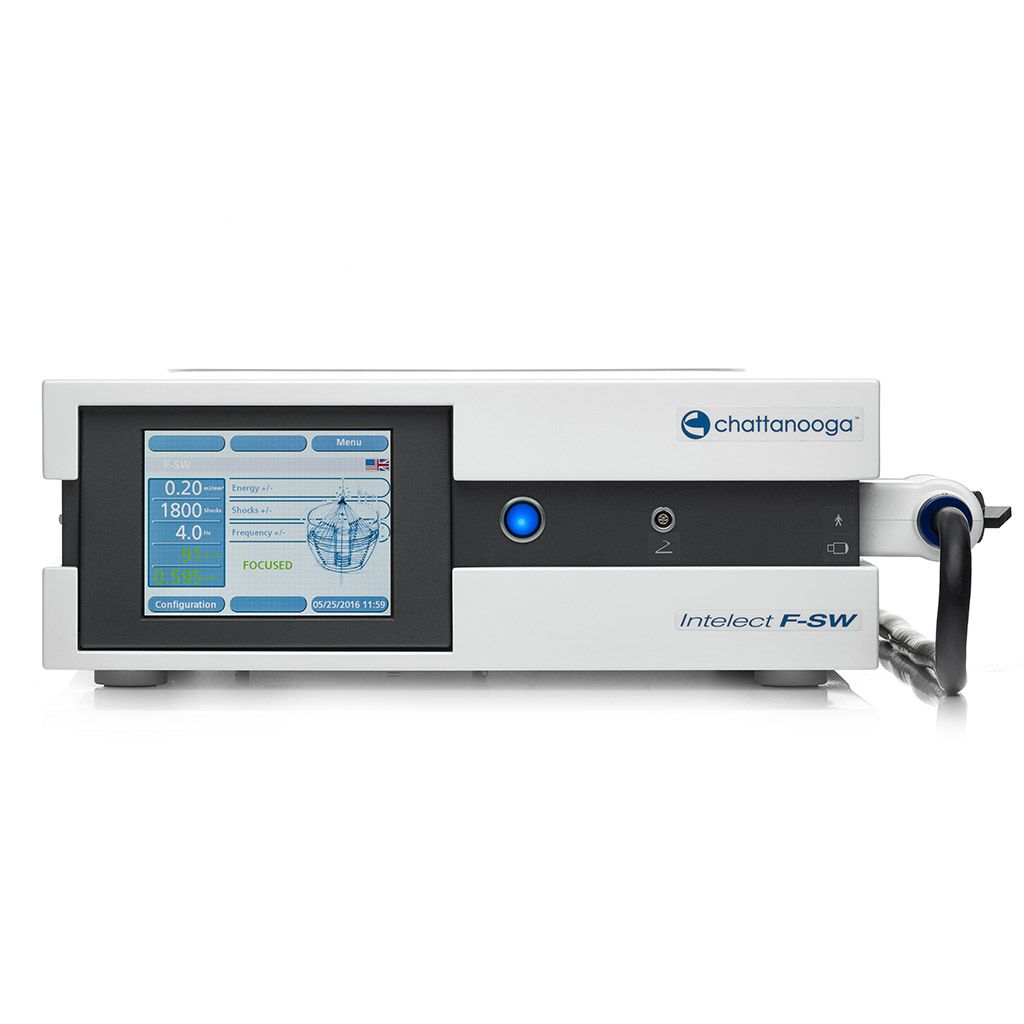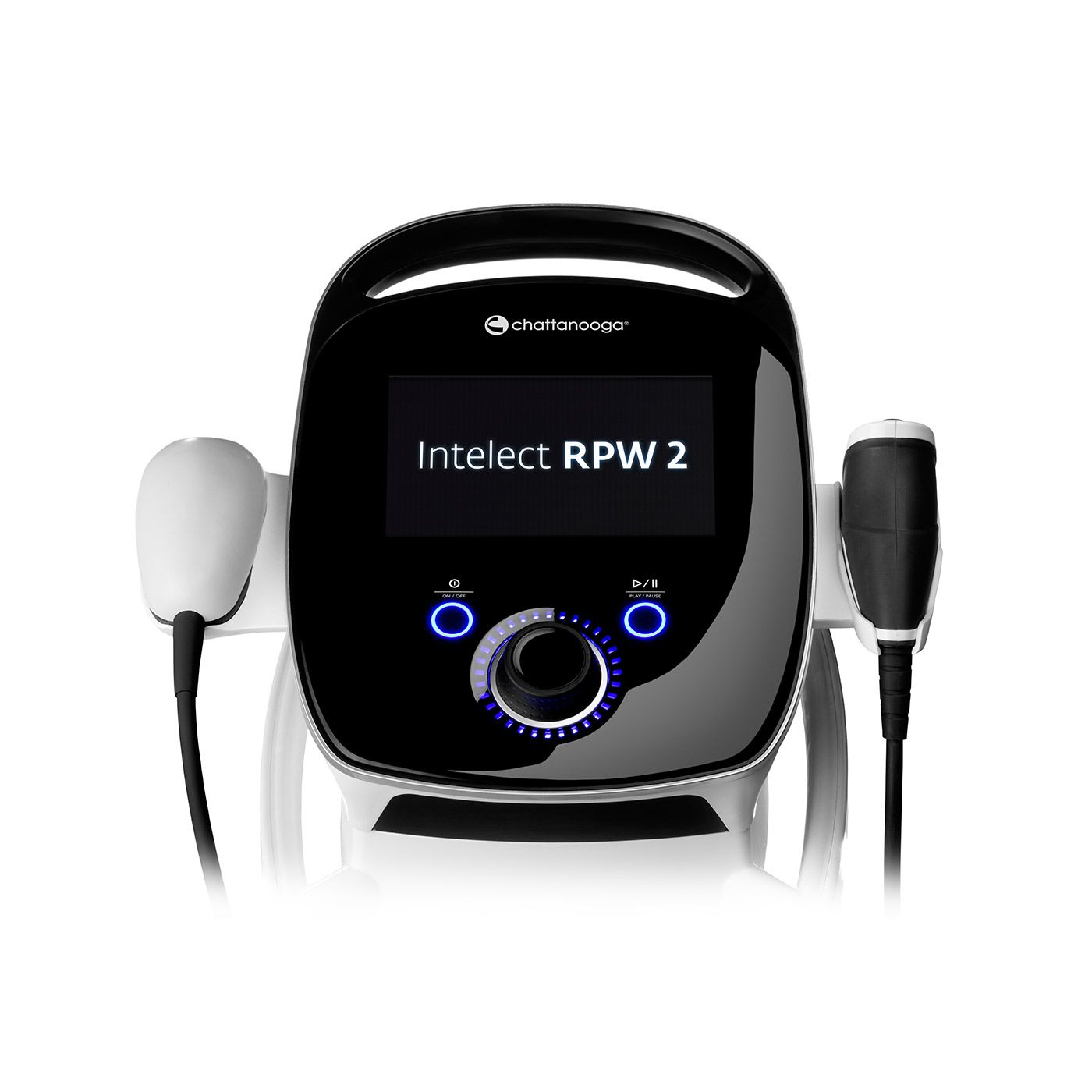Does ESWT really work?
Posted by William Stevenson on
A Glimpse into the Realm of Extracorporeal Shockwave Therapy
As we continue to experience advancements in medical technology, newer modalities of treatment are continually emerging. One such innovation involves the application of shockwaves to alleviate various medical conditions — an approach known as Extracorporeal Shockwave Therapy (ESWT).
ESWT leverages shockwaves — high-pressure, acoustic waves — to trigger the body's innate repair mechanisms. This technique is increasingly utilized across diverse medical fields, including physiotherapy, orthopedics, and urology. With potential applications from soft tissue injuries to kidney stones, ESWT's prominence is rapidly growing.
The treatment process is facilitated by equipment from reputable manufacturers, like DJO and effective ESWT Therapy. These devices incorporate the latest technology, including laser assistance, to ensure maximum therapeutic efficacy.
Contemplating the Effectiveness of ESWT
Yet, despite the promising applications, a crucial query looms large - Does ESWT really work? This question is certainly not unfounded and echoes many medical practitioners' and patients' concerns. Can shockwaves truly enable healing, or are we riding the wave of a new fad without concrete evidence?
These are some of the questions that we will delve into more granular detail throughout this essay, as we strive to demystify this revolutionary treatment, its applications, and its varying success rates.
Complete Understanding of ESWT
Dissecting the ESWT Process With DJO and Enovis Tools
ESWT employs shockwaves as a non-invasive method to stimulate healing in certain physical conditions. These shockwaves, generated outside the body, are directed onto the target area to activate body's natural healing response. The ESWT treatment process involves a few crucial steps and instruments, predominantly sourced from medical device leaders like DJO and Enovis.
DJO Medical Equipment stands at the forefront of this field with its range of state-of-the-art shockwave devices designed for maximum comfort, ease, and effectiveness. Reputed for their advanced technology, DJO devices are ubiquitous in ESWT applications. From their ergonomic design to customizable frequencies, they exhibit a firm understanding of the therapeutic needs and the practitioner's usability expectations.
Simultaneously, Enovis Therapy Devices share the marketplace with DJO. Enovis, with its offerings, provides a robust choice of quality shockwave therapy instruments. Their devices reflect innovative design concepts to maximize ESWT's impact and facilitate the best patient outcomes.
The choice between DJO and Enovis often boils down to specific treatment requirements, and practitioners may need to factor in many variables. Regardless of the device chosen, the promise of ESWT lies in the precise and calibrated delivery of shock waves to stimulate the body's healing processes.
Laser Integrated Therapy in ESWT
While the core concept of ESWT revolves around shockwaves, modern devices often incorporate supplementary technologies to enhance treatment outcomes. Laser-assisted ESWT is a notable development in this regard.
Laser integrated therapy makes use of low-level laser light, alongside shockwaves, to stimulate healing and to reduce inflammation and pain. The lasers function at a cellular level, accelerating the healing process by increasing mitochondrial production of ATP, the energy currency for cells.
By incorporating the precision and power of lasers, ESWT treatments can target problem areas more effectively, promoting better patient results. Moreover, the combination of shockwave and laser therapy has proven to offer a more comprehensive approach to treatment. This fusion of technologies underlines the relentless quest for ESWT effectiveness and the evolving adaptability to new therapeutic advancements.
Application of ESWT in Various Fields
ESWT in Orthopedics, Physiotherapy, and Urology
Extracorporeal shockwave therapy has demonstrated diverse applications within multiple medical disciplines, rewarding it with increased acceptance across orthopedic, physiotherapy, and urology practices.
In orthopedics, ESWT has revolutionized the perks of non-invasive interventions. Orthopedic shockwave treatment is being progressively used for various musculoskeletal conditions such as plantar fasciitis, tennis elbow, jumper's knee, shoulder tendinopathies, and more. The benefits of shockwave therapy in these cases often encompass pain reduction, improved mobility, and expedited healing, reducing the need for invasive surgery.
Physiotherapy is another field where ESWT shines. Physical therapists increasingly leverage this modality for its promising effects on mobility and pain management. From chronic muscular pain to addressing soft tissue injuries, ESWT is redefining rehabilitative protocols within physiotherapy.
In urology, ESWT is esteemed for its potential in managing renal calculus or kidney stones. The shockwaves disintegrate the stones, making them small enough to pass through the urinary system, thus reducing the need for invasive procedures.

Exploring Patient Outcomes and Success Rates
While the above applications are encouraging, the proof in medicine always lies in quantifiable patient outcomes. Numerous ESWT clinical studies have been conducted to assess these, resulting in favorable findings endorsing the effectiveness of shockwave therapy.
Real-world evidence and patient testimonials echo these results, attesting to significant improvement in mobility, pain reduction, and enhanced quality of life. That said, the success rates are heavily influenced by the appropriateness of candidate selection, practitioners' proficiency with the technology, and adherence to recommended treatment protocols.
Successfully incorporating devices from DJO and Enovis, the ESWT treatment process has observational success across various medical fields, offering a glimpse of potential future advancements in non-invasive therapeutic interventions.
Evaluating the Effectiveness of ESWT
Investigating Current Research Studies and Clinical Trials on ESWT
Verifying the efficacy of a novel medical procedure involves extensive research studies and clinical trials. ESWT has been the subject of countless trials worldwide, contributing substantially to its therapeutic validation.
ESWT clinical studies have spanned a range of conditions, including musculoskeletal injuries, tendon-related problems, erectile dysfunction, diabetic foot ulcers, and more. These studies have, more often than not, presented positive results echoing the benefits of shockwave therapy in managing these conditions. Pain reduction, faster healing, improved functionality, and avoidance of invasive surgical interventions are frequently reported advantages of ESWT.
Furthermore, follow-up studies conducted after treatment have provided encouraging long-term results. Many patients experience an extended period of relief and improved quality of life, further consolidating ESWT's position as a preferred treatment strategy for certain conditions.
Success, Failure Rates, and Factors Influencing ESWT Efficacy
To solely focus on success would be an injustice to the holistic evaluation of ESWT's effectiveness. It is essential to consider instances where ESWT may not have yielded the expected outcomes.
Truthfully, ESWT may not be the magical cure-all for every patient. The overall success rates are influenced by several factors including the severity and nature of the condition, patient's overall health status, and adherence to recommended therapy protocols. While ESWT has a successful track record in treating a variety of conditions, it may not be as effective in patients with severe diseases or those with poor overall health status.
Furthermore, the effectiveness of ESWT can be significantly improved with the use of advanced devices, such as those provided by DJO and Enovis. These modern tools, when used correctly, can lead to better patient outcomes and higher success rates.
The future of ESWT, however, looks promising. With continuous advancements in technology and accumulating empirical evidence supporting its strain of benefits, ESWT is on the path to redefining non-invasive treatments across medical fields.
Final Reflections on Shockwave Therapy's Effectiveness
A Review of ESWT's Potential
The wide-ranging inquiries around the effectiveness of Extracorporeal Shockwave Therapy (ESWT) invite a closer review. What's evident from the extensive discussion is that ESWT, supported by devices from DJO and Enovis, has established a remarkable presence in the therapeutic landscape.
Countless success stories from patients and the optimistic views of practitioners affirm the shockwave therapy benefits. However, it should be underscored that while ESWT promises significant advancements in healthcare, its effectiveness is not universal. Factors such as the condition severity, patient's health status, and therapy protocol adherence can substantially influence treatment outcomes.
By and large, the consensus points toward ESWT's efficacy. It has proven to be a viable non-invasive treatment option, particularly for orthopedic, physiotherapy, and urological ailments, thus driving positive patient outcomes and enhancing their quality of life.

Considerations for ESWT's Advancements
Looking Ahead: The Future of ESWT
While acknowledging the current merits of ESWT, it's imperative to look ahead. The landscape of medical technology is in constant flux, and ESWT is no exception. Developments in related technologies, such as laser-assisted ESWT, have already shown promise in enhancing treatment benefits and outcomes.
Going forward, continuous research and clinical trials are expected to further validate ESWT's effectiveness. As more practical data comes through, the medical community will be better equipped to maximize treatment outcomes, bolstering ESWT's standing in the therapeutic enclave.
On the whole, ESWT, backed by advanced devices from DJO and Enovis, holds vast potential. It remains a beacon of hope in non-invasive treatments, anticipated to shape a patient-friendly future in medical treatment regimens.
